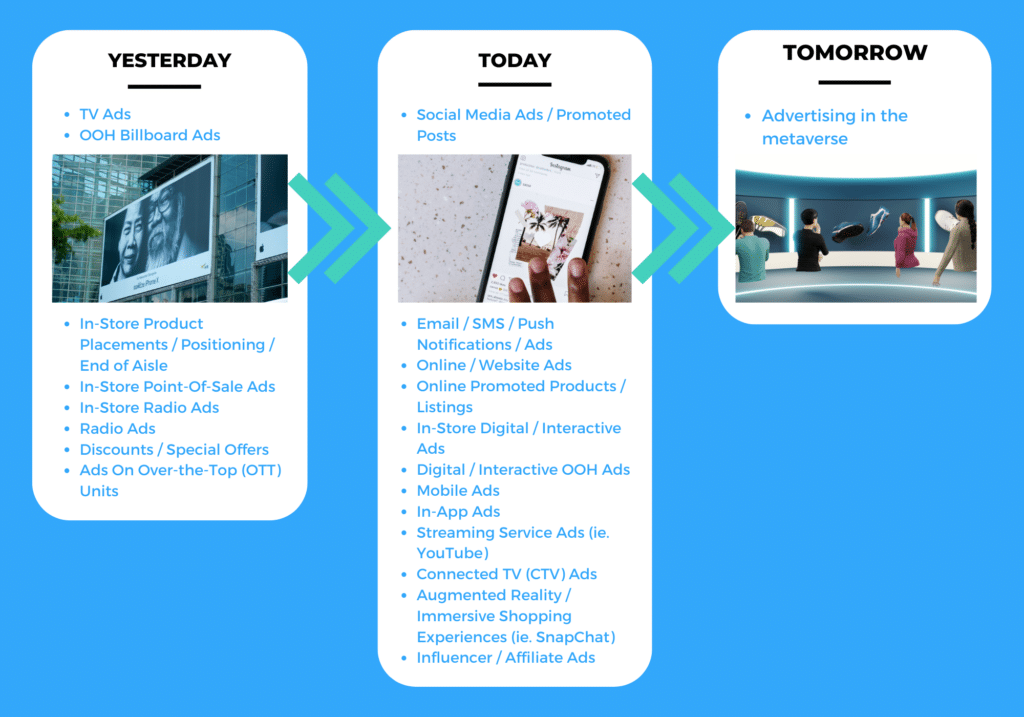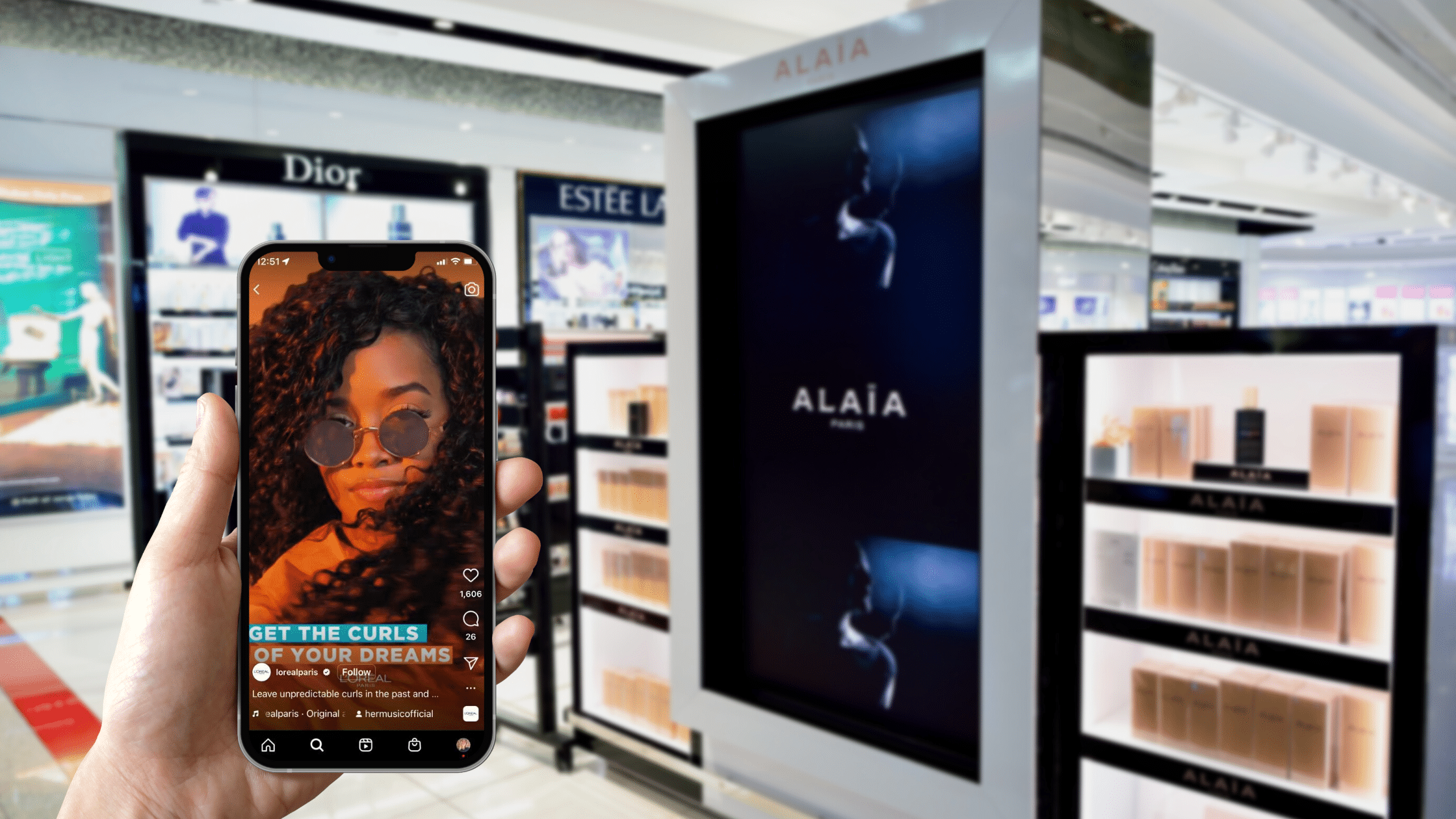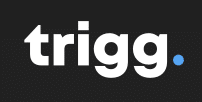Thanks to the plethora of rich first-party data available through consumer purchases and loyalty programmes, retail media is experiencing a huge boom. Its value is expected to have grown 25% per year, with a predicted market value of around $100 billion in 2026. In today’s blog, we’re exploring the new ways retailers are monetizing their media space and highlighting some of the brands that have successfully managed the retail-media crossover so far.
What Is Retail Media?
Retail media is the advertisement of products or services through retail space (physical or digital).
For direct-to-consumer brands, this method of advertising has been around for quite some time. However, until recently, it has generally focused only on the physical retail space (i.e. stores).
Today, with 14% of global retail sales taking place online, retailers are beginning to make use of their online space, too. Plus, with more and more information being collected about consumers through online purchases and loyalty programmes, retailers can provide brands with the opportunity to reach their exact target audience without wasting their advertising budget on reaching anyone outside of it.
What Channels Are Involved In Retail Media And How Have They Evolved Over Time?
There has always been a plethora of potential advertising channels involved in retail media, and these only continue to grow. The image below highlights the way these channels have developed over time…

So What Is Working For Retailers Right Now?
Many retailers are already utilising both their in-store and online media space, coupled with first-party customer data, to generate additional revenue. Here are a few examples…
Loblaws – as the number one pharmaceutical retailer in Canada, Loblaws has a huge customer base to take advantage of. Through its media arm, ‘Loblaw Media’, the retailer is currently monetising its retail space through sponsored products (in-store and online), display ads and social media promotion. For example, the banner below, found on the Loblaws homepage, advertises an offer encouraging customers to purchase products from a specific brand (no name®) to receive additional loyalty points.
Cartology – with more than 13.5 million customers across Australia and New Zealand via Woolworths and the Fresh Ideas magazine, Cartology has developed a set of media kits to highlight its offering to advertisers. Taken directly from their media kit, the wheel below highlights the many spaces available to advertisers both online and in-person, divided into the three core stages of the marketing funnel.
Tesco – the UK’s leading supermarket (with a market share of over 27%), Tesco offers brands the opportunity to promote their products through sponsored product listings (both in-store and online), special offers (including offers for Clubcard members), social media content and in-store point of sale, as well as placements in its food magazine. The banner below, taken from the Tesco Groceries website, highlights some of the Clubcard offers currently running online in partnership with Walkers, McCain and Birds Eye.
—
While this list is far from exhaustive, it does highlight some of the many ways that retailers are developing entirely new revenue streams through retail media.
At Trigg Digital, we’ve worked with some of the world’s biggest retail brands to create new streams of revenue through the retail-media crossover.
To find out more about what we’ve done before, and how we could replicate it in your business, get in touch on +44 203 239 8492 or at hello@triggdigital.com.
- Team Trigg At Dev Ops Dreamin’ - September 16, 2022
- These Retailers Are Creating A Whole New Revenue Stream (And You Can Do It, Too) - August 5, 2022
- How To Make Display Ads That Get Clicks (And Don’t Bounce!) - July 20, 2022



